Our last article looked into the history of the West Third Business District in Wright-Dunbar, including some old maps of the area. Today we’ll take it a step further by digging into the stories of many of the individual commercial buildings.
1000 Block
The Hoover Block, built in 1890, is an imposing presence on the southeast corner of West Third and Williams. Originally it consisted of stores on the first floor, office spaces on the second floor, and a meeting space on the third. The Wright Brothers, who lived nearby, occupied this building for their print shop before moving to the Wright Cycle Company location just a stone’s throw south on Williams Street. (Read more about the Hoover Block and Wright printing history in a previous Dayton Vistas article.)
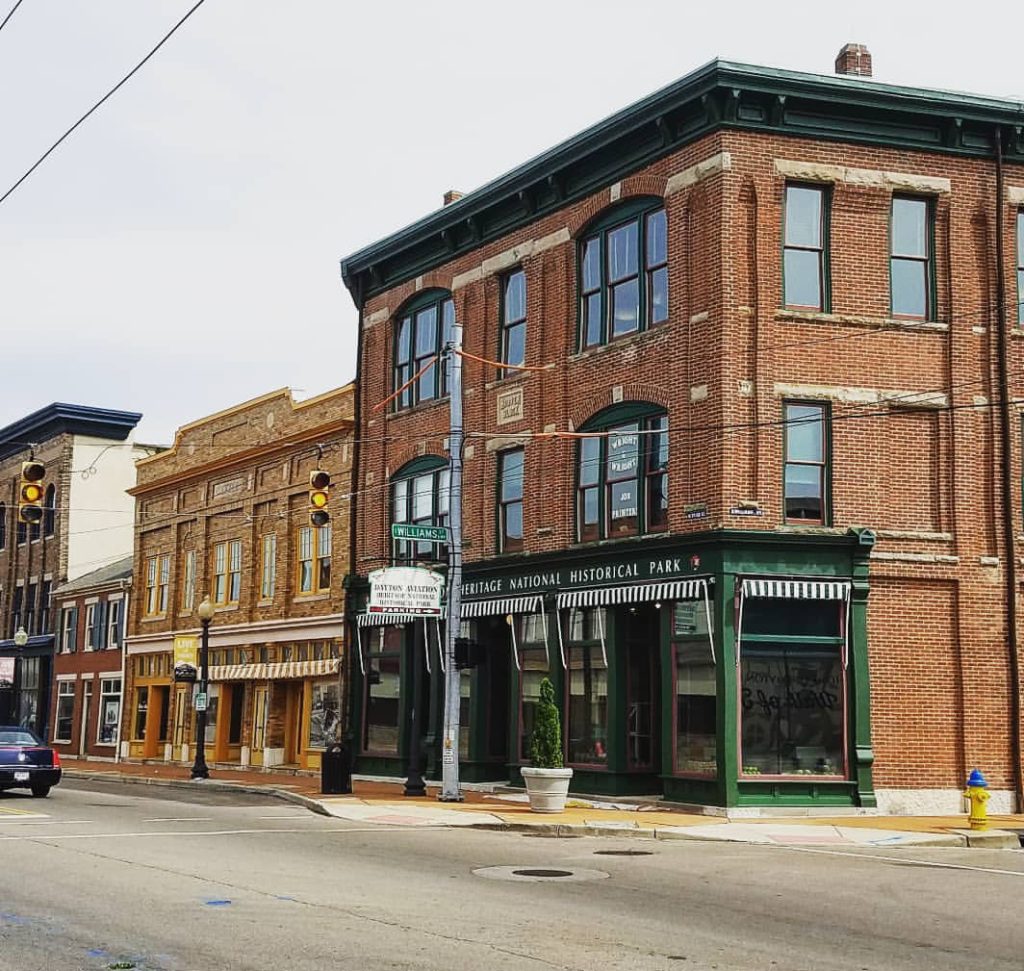
Jumping across the street and moving slightly east, the facade of the Gem City Ice Cream Building at 1005 W Third Street dates to 1914. “The building actually consists of a series of additions wrapped around the structure that housed the first Wright bicycle shop in 1893.” Gem City Ice Cream was the first manufactured ice cream in Dayton.
Despite the historic Wright connection, the building was judged not to have enough historic integrity to merit individual inclusion on the National Register of Historic Places, although three walls of the original cycle shop are still standing. The building was declared a public nuisance in 2012 and the lack of a developer willing to take on the project meant that demolition would be likely (Dayton Daily News). The building has managed to hang on to the present day, but no reuse plans are in the works and the bulldozer still looms.
Even the most avid of preservationists would concede that we will eventually need to lose the back structure (the lighter addition barely visible at far right below), which is gutted and exposed to the elements. But hopefully the front building or at least the facade can be preserved.
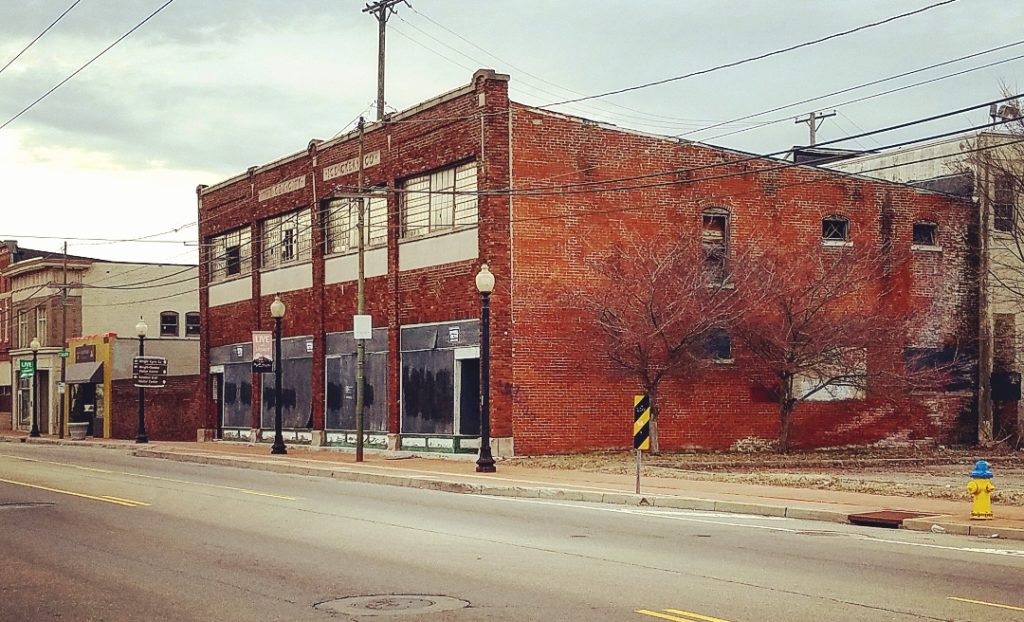
The Booth Building, an easy one to identify since the name and year are visible on the facade, is a Romanesque Revival commercial building built in 1890. It is currently occupied by a newly-opened realtor’s office and the Innerwest Priority Board.
In the 1890s the structure housed the Booth Grocery & Co, “dealers in Staple and Fancy Groceries.” A ghost sign for a grocery is still visible on the west wall. The Hoover Block on the corner also housed a grocery store for many years, and a replica of the store run by Frank Hale is part of the Wright-Dunbar Interpretive Center.

Back on the north side of Third, Mory’s Block (1884, image below) is a “pivotal” early commercial structure, as described in the historic register nomination: “The original iron columns and metal store front cornice all have survived. Seven window bays with stone sills and a continuous lintel service Mory’s Hall. Above the lintel are recessed panels with corbelled tops and a label panel. A stone string course supports a blind arcade just below the metal cornice. The store windows have been infilled with smaller windows and siding, however, the original storefront configuration is still apparent.”
West Third Street Theaters
The African-American entertainment district known as the Nickel was located on West Fifth Street just a few blocks away, and its most important theaters, both demolished, were the Classic and the Palace. But West Third had theaters too, and these examples do still stand.
The Midget Theater (1912) is a Neoclassical revival building built for Sherman W. Potterf, a man of small stature for whom the theater was named. The theater took advantage of this for marketing purposes by declaring that there was “nothing small about the Midget – only the manager.” The claim was backed up by some impressive amenities including a Wurlitzer orchestra piano to accompany the silent films, comfortable opera chairs that seated 300, and a curtain to hide the screen that featured a painting of the original Third Street Bridge.
Despite these features, the theater only operated until 1928. The building, however, is a rare example of a former neighborhood nickelodeon theater that has survived to present day.

For a look inside the Midget Theater and a few other Wright-Dunbar locations, check out the great Decoding Dayton episode by Indigo Life Media.
The Pekin Theater (1890) was part of the Enterprise Block, “a long (130 feet), narrow (45 feet) building with three stories and a basement, totaling about 20,000 square feet. The theater, which was built around 1890, began as a nickelodeon and also presented vaudeville acts.” It was a part of the Colored Consolidated Time vaudeville circuit and hosted performances by Bert Whitman and the Sunbeams, Sam Davis, and comedians Price and Jones in 1914-15.
It too would close soon after, however. According to the National Park Service, “with the decline of the west Dayton community, the theater fell into disrepair, eventually including the collapse of its roof and floors. By 2002, the building consisted only of the front and side walls held up by buttresses.” Despite this, the structure has survived, and has been mentioned in various redevelopment proposals, although nothing concrete has materialized.
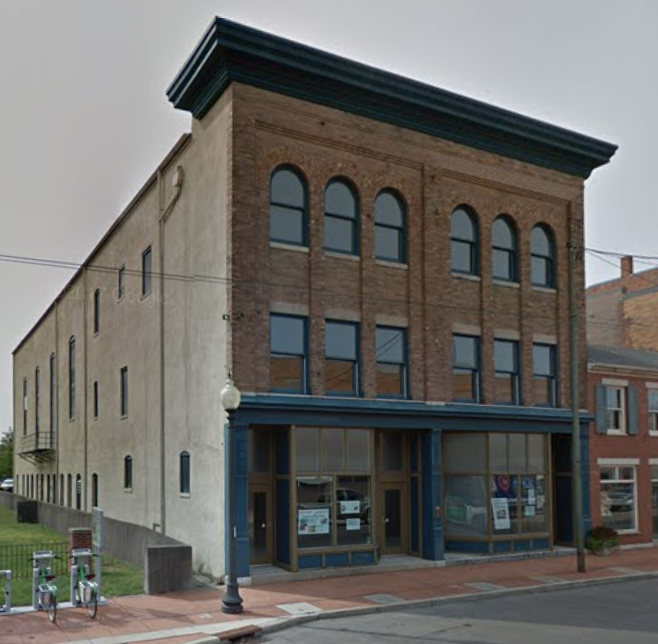
1100 Block
The Gunkel Building was erected in 1898 and was the longtime home of Hamburger’s hardware store where the Wright Brothers were customers. It was also the location of Dayton’s first branch post office. We’ve also previously published an article about the Gunkel Building, including a pre-restoration photo from when its future looked grim.
Next to it are the three-story Gunkel Block (1893) and the similar Webbert Flats (1908).
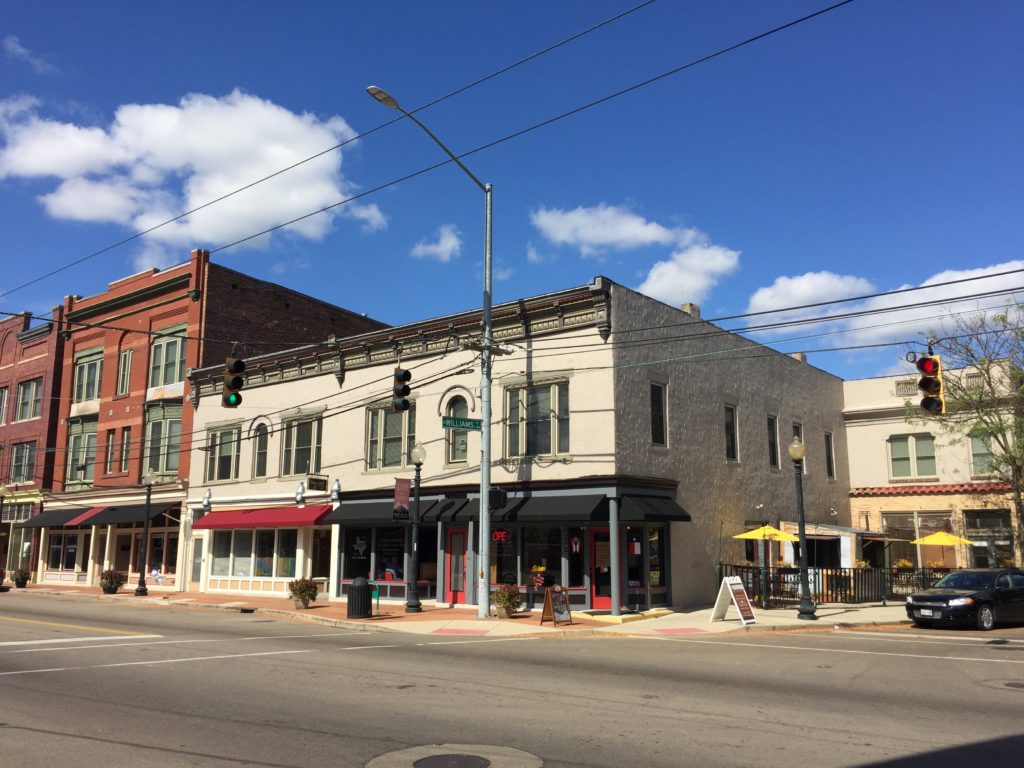
Walter’s Block (1120-1130) was built in three phases from 1885 until 1893. It has the distinction of being “the only remaining High Victorian commercial block in Dayton that clearly represents its time in history.”
It has housed a wide variety of retail businesses over the decades. In 1890 it featured W. A. Lincoln’s, which offered “Ladies Underwear, Gent’s Underwear, Children’s Underwear, Gloves and Mittens, Skirts, (and) all wool hose.”
The building also had a public hall and event space for many years. As of 1898 it was called the Mystic Chain Hall, and a typical event of the time was an Oyster Supper and Social given by the King’s Daughters of Fourth Church Reformed (Dayton Daily News 10/20/1898).
Today it houses the popular Zik’s Pharmacy, and a restaurant is considering a location in the single-story building next door.
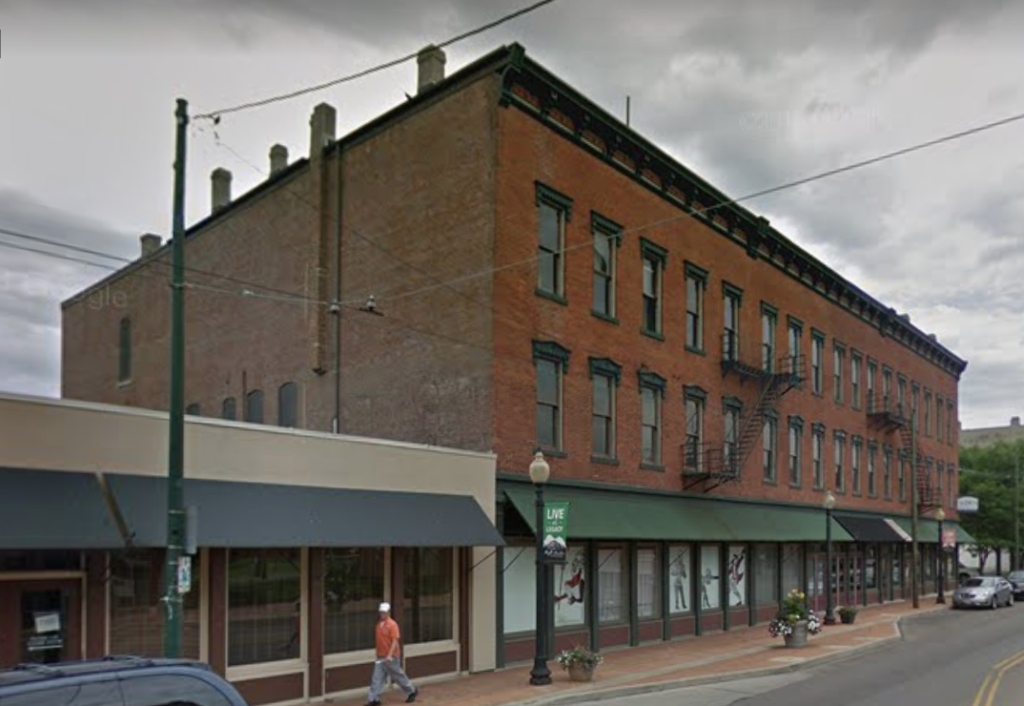
The Marietta Flats (1913) at 1146-1148 is another mixed commercial and apartment building that “represents the influence of early twentieth century cultural expression in architecture.”
The Georgian Revival structure stands three stories and is made of pressed brick with an “elaborate cast iron entrance with Doric pilasters, cornice with label and segmental pediment with foliated tympanum.”
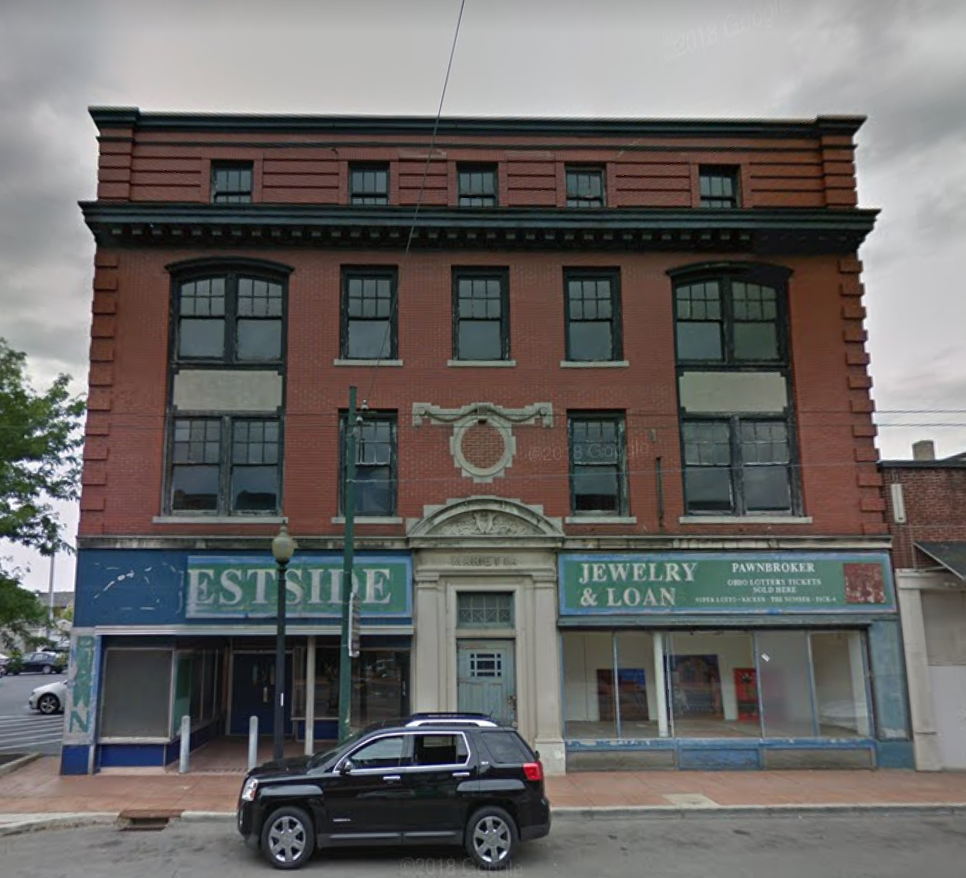
The West Side Building and Loan Association Building (1922) features the district’s only stone facade and is an example of Neoclassical Revival architecture. The West Side Building and Loan Association moved to this location in 1922 and carved its name into the stone alongside an eagle (both of which have since been removed).
The company only stuck around until 1938, however, at which point the Winters National Bank & Trust Company opened a new branch here. It’s still operating as a bank branch (Chase Bank) today.

On the north side of the street is a great series of commercial structures including the 1909 Hoersting-Holtman Building (1131-1137), featuring mixed pattern storefront bays with “considerable original fabric,” “four 3-part polygonal oriels with elaborate scroll sawed Eastlake like detailing,” and a “whimsical” cornice including “panels, pendants, rosettes, variformed dentil like devices and modillions.”
Next are the twin Groneweg and Webbert Buildings, both constructed around 1913, including excellent second story oriels and metal cornices.


The void at the northwest end of the district was a more recent loss, the three story yellow brick Olney Flats which was demolished in 2004. The structure, which was already partially collapsed inside, had its west wall crumble during a wind storm. Owner Phil Gregory and the City of Dayton had argued over repairs and demolition, and the conflict reached a surprise ending when the collapse forced an immediate razing despite wishes that the facade could be saved to keep the streetscape intact. (“Collapse of Wall Dooms Building,” Dayton Daily News, 12/2/2004)
The more famous void on the block at 1127 West Third Street is former location of the Wright Brothers’ final cycle shop which was moved to Greenfield Village in Dearborn Michigan by Henry Ford.
Williams Street
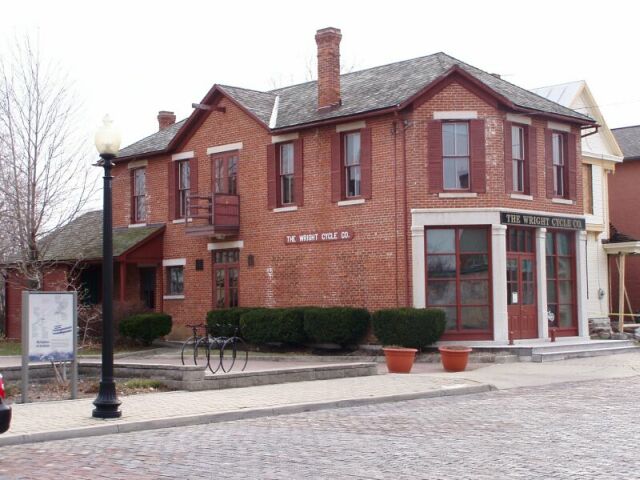
Just off West Third near the Hoover Block, the Wright Cycle Company Building (1886) is a late Victorian two-story commercial structure. It’s the only bicycle shop used by the Wrights that is still standing at its original location (not counting the Gem City Ice Cream building discussed above). After it was erected in 1886 by brothers Abraham and Joseph Nicholas, it served multiple purposes–a grocery, a feed store, saloon, and a boarding house–before the Wrights moved in in 1895 when they were looking for larger quarters for their bicycle business. When they did, the rent was $16 a month for the whole building.
The bicycle business was not the only one they operated from this building, as they still managed their printing business on the second floor. For their work they needed access to the to national news wires, and this is where they received word of the death of aviation pioneer Otto Lillienthal in 1896, an event which did much to spark their own passion for conquering the skies (National Register of Historic Places).
They operated the bike shop from 1895-1897, and this was the shop where Wilbur and Orville began to manufacture their own brands of bicycles. This improved their mechanical acumen and also brought in financial resources, both key to their subsequent successes in aviation.
That the building was saved and looks as it does today is a remarkable achievement. It was significantly altered shortly after 1900 and changed from a commercial building to a two-family home. The storefront and display windows were taken out and replaced by a “recessed exterior wall of novelty wood siding” and bay windows. The first floor was turned into five separate rooms.
By 1980, the Wright Brothers connection was long forgotten and the building was vacant, derelict, and scheduled for demolition. But a magazine article featured a previously unpublished historic photo of the building bearing the Wright Cycle Company name.
The realization that it was still standing set in motion a movement to preserve it as well as the adjacent Hoover Block. Aviation Trial Inc. oversaw the restoration project which included replacement of the roof; chemical removal of paint from the brick walls; removal of the bay windows, basement exit, and two first floor windows dating after 1897; elimination of non-historic interior partitions; reestablishment of historic doorways; application of new siding to the rear addition; and replication and installation of shutters based on an original shutter that was found.
The Wright Cycle Shop opened as a museum on June 28, 1988, and the following year it was designated a National Historic Landmark. For more details, check out our previous articles on the Hoover Block, the aviation museum, and the Dunbar house.
Additional sources:
West Third Street National Register of Historic Places Nomination Form
Selected photo credits: Jon White
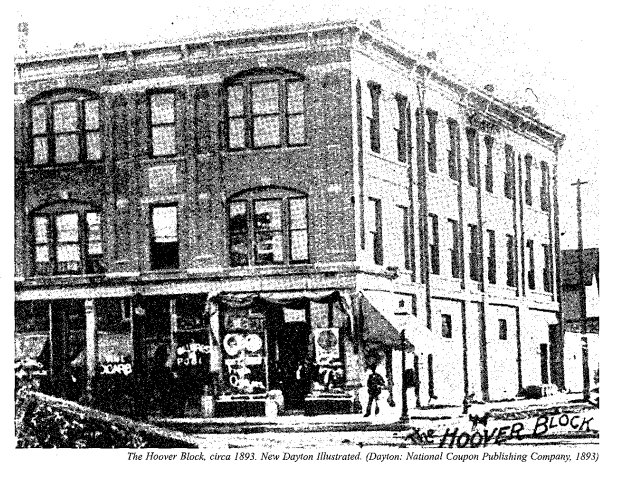
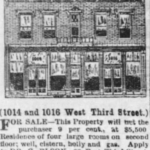
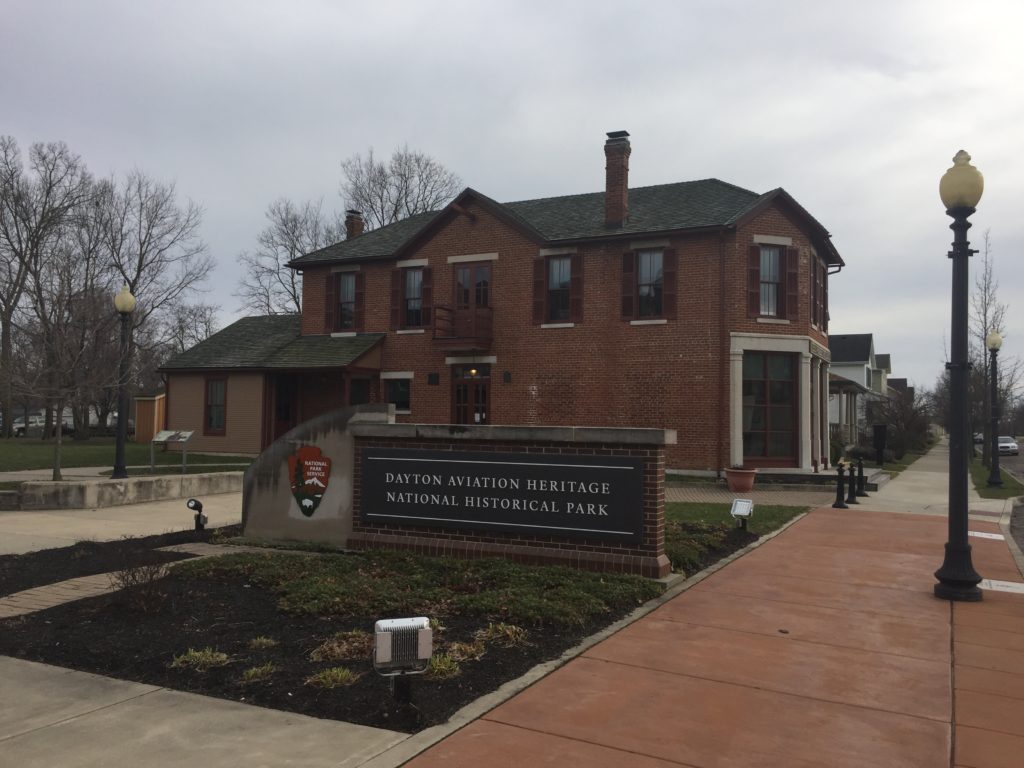
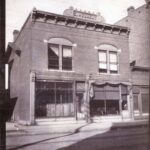
What a beautiful informational story of Wright Dunbar. Thanks for sharing. I am going to repost it on social media for people to know and learn
I wish to see old pics of Third St. Like the Dayton Steel Foundry. The old Kroger store etc.
Any history on the West Side Chevy building at 800 W. 3rd?
Thanks for your post about Wright-Dunbar. In my day job I work for the National Aviation Heritage Area and my office is in the Wright-Dunbar District. Separately, I researched the history of brewing in the Dayton region for a book. You might be interested in my blog, dayton-beer.com. My most recent post (April 22) includes a map I made that shows locations of pre-Prohibition breweries.
Tim, thanks for the comment! I did come across something about your book recently and I’m looking forward to reading it. Thanks for sharing your blog as well. That map is great! I’ve only heard of a few of the old breweries around town and I also definitely didn’t know that remaining Olt Brothers building is still there on N. McGee; very cool!
My dad’s grocery store, Shop Rite, was on the corner of 3rd and Williams. I had no idea the historical relavance of those buildings! WOW!